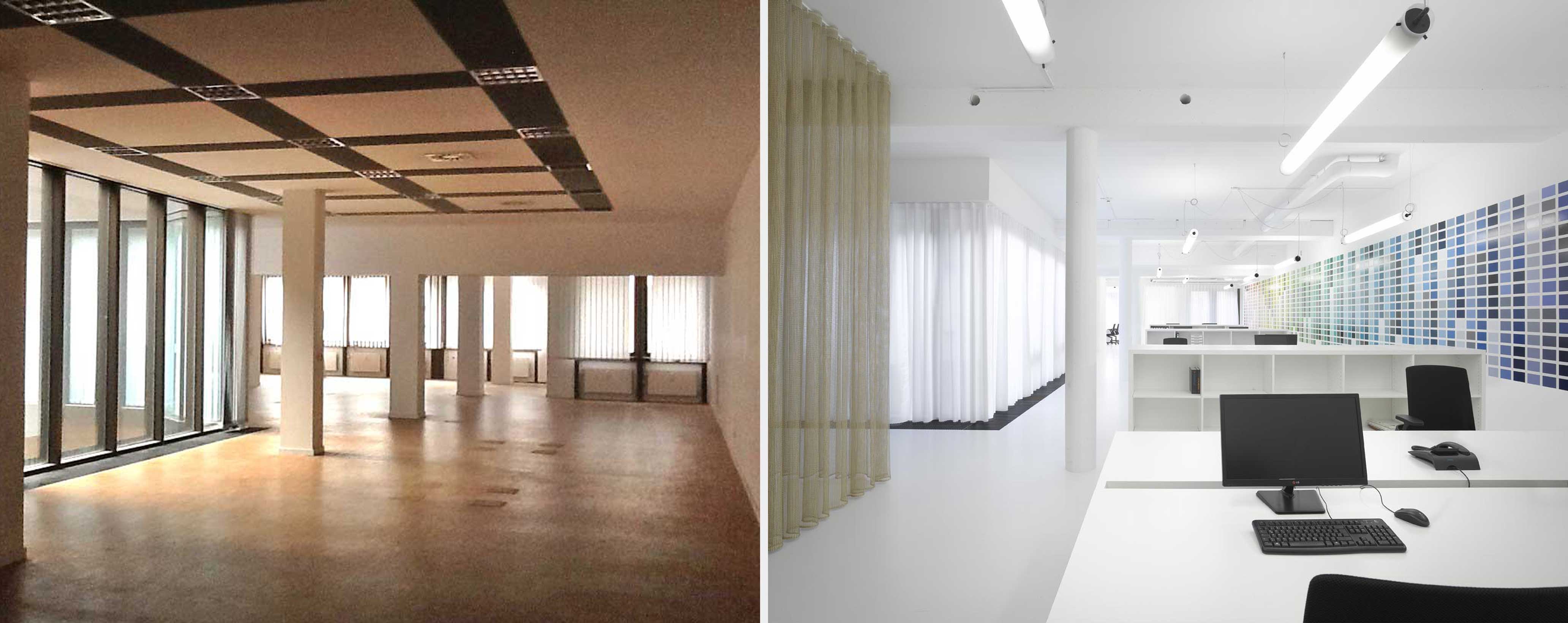
What do you think of when hearing of open-plan offices? Grey walls, dark carpets, low light, cube farms, telephones ringing, and a buzz like in a beehive? We often meet people that cannot imagine a pleasant atmosphere in an open-plan office.
We do admit – the description above is quite extreme, nevertheless that is the common association with offices that have more than two to four work places in one room. But we would like to state the contrary example: Let’s forget the gloomy atmosphere surrounding the word “open-plan” and let’s face the light side.
For our architecture studio, we designed an open, light, and welcoming space of a larger scale. Since 2014, our office is situated directly opposite the city’s opera designed by Georg Ludwig Friedrich Laves (1788-1864). The advantages of the communicative working atmosphere are obvious:
A lot of space and differently structured, variable rooms create the differentiating atmospheres and support the flexible and project-related work method that architects have. The central working space has a glazed inner courtyard thus letting the daylight flood the space. Accentuated by the designed wall, the former bank floor now appears fresh and modern. Measuring 20 meters, the fresco mapping the 1,625 colors of the RAL D2 system is the first wall of this kind in the world. The white floor (PU) and white furniture form an aesthetic counterpart and at the same time unify the various zones of the entire office.
A special highlight is the elegant meeting space. By specially manufactured acoustic curtains (Création Baumann) the space can be separated from the working area if needed, thus creating an intimate and concentrated meeting atmosphere. The office chairs by Wilkhahn harmonically support this atmosphere being continued in the lounge. Transparent curtains, comfortable couches and a carpet set the accents and create comfort as well as a retreat. Contrary to that, the kitchen is a lively space interpreted by pop-art on the wall. Thus, the respective spaces have their own accents and are designed according to their use without falling back to the “classic” open-plan design.
Are you still afraid of open-plan offices? We are obviously not.

